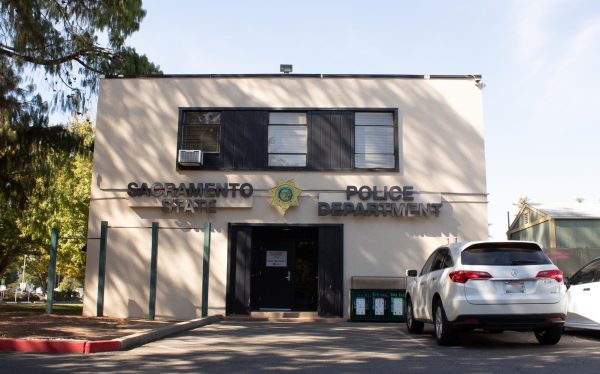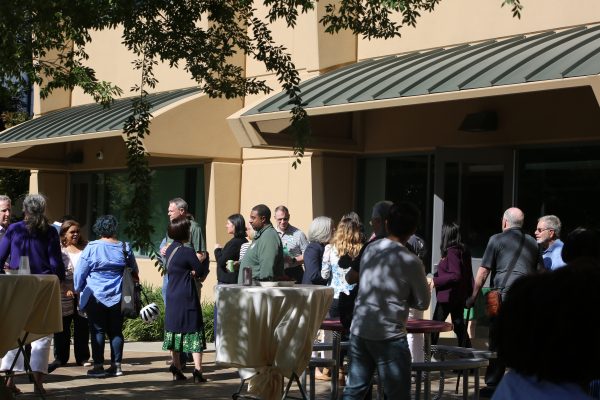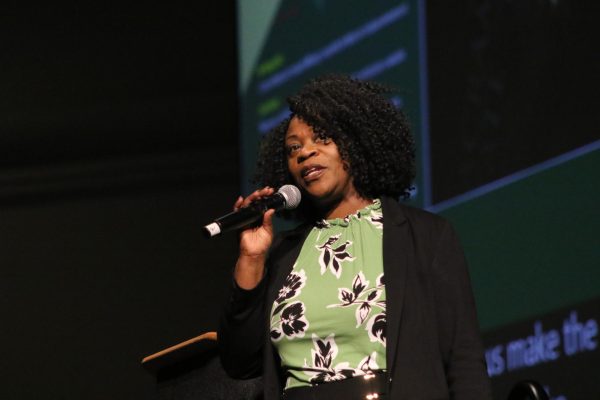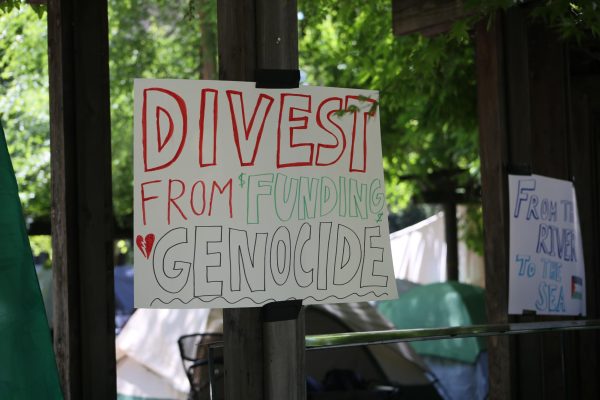RWEC on track for 2010
November 9, 2005
Despite a lack of visible progress, the $120 million Recreation Wellness and Events Center is on track to meet its 2010 deadline, said Frank Whitlatch, interim associate vice president of public affairs.
However, with donations currently totaling around $11.3 million, President Alexander Gonzalez recently formed a 14-member executive committee to help raise funds specifically for the project.
Several other donations are in the works, said Whitlatch, adding that their amounts will be released upon approval.
According to the RWEC referendum, once construction begins, student fees are to take full effect at $110 per semester. University officials, including University Union Director Leslie Davis, Associate Vice President of Development Vince Sales and Whitlatch, said last spring in The State Hornet that students’ fees wouldn’t increase as the projected cost grew.
But the $110 fee could go up over the years as the economy changes, according to the referendum.
Whitlatch said he hasn’t heard about an addition to the student fee.
“The fees are set; what causes the increase is just the inflation formula,” Whitlatch said. “Those are the fees students voted for.”
Sales said the first meeting with the executive committee was to inform the members of the responsibilities for RWEC fundraising. “Our meeting this week will give the committee a better understanding of the architectural planning of the space and we will share prospective donors with each other,” she said.
Gonzalez has pledged to raise $25 million in donations for the RWEC. The university received a $10 million donation from Alex and Faye Spanos last year, and a $1.3 million donation from women’s tennis coach Bill Campbell to fund the new field house. Campbell’s donation will also be applied to renovations on the campus tennis courts.
The project’s initial cost was $73 million. That cost jumped to $120 million in March when plans to upgrade the football stadium were added and the price of steel increases.
Whitlatch said the increased price tag would not come from student dollars, but rather from private donations.
“I feel very confident that the RWEC will be completed by 2010,” Whitlatch said last week. “I think this is a president who wants to be held accountable for what gets done.”
Sales said he’ll shift his primary focus to six- and seven-figure gifts, and is also confident that support from the community will continue to fund the project.
“People outside the campus are enthusiastic,” Sales said. “As I meet with alumni outside the university they have tremendous affinity for the campus.”
There is also a great deal of excitement on the campus and in the community that is translating into solid financial support, Whitlatch said. –
But not everyone on campus is excited about the RWEC. Senior Leslie Elliott didn’t vote for the center and her friends who did aren’t happy with the way things are going on the project.-
“The people I know who voted for it have heard that the things they really wanted when they voted may not even be included anymore,” said Elliott, a mathematics major. “And I didn’t vote for it because the campus was already in dire straights financially when it was proposed.”
The State Hornet reported in April that construction delays, funding uncertainties and space constraints could mean the proposed bowling alley, movie theater and swimming pool won’t make the final cut on RWEC blueprints. –
And with an ambiguous completion date for the center and a price tag that continues to rise, other financial situations on campus are bothering Elliott.
“I’m really annoyed that Gonzalez received a $1,000 a month allowance from the CSU for a car,” she said. “And that he received a big raise.”
The California State Board of Trustees voted on Oct. 27 to increase the salaries of all campus presidents in the CSU system ?” an average increase of $31,000 a year ?” and granted them a $1,000 monthly car stipend and $50,000 to $60,000 in annual housing allowances.
In his fall address this semester, Gonzalez remained focused on the initiative “The year ahead promises to be a busy one,” he said. “The specific goals of our Destination 2010 initiative will remain our priorities.”
One of the highlights of those priorities is the first phase of the RWEC, which is the construction of a new field house.
“The new center will be built where the old field house sits now,” said Ron Richardson, interim associate vice president of facilities management.–“But it will cover much more ground than that.–The first thing we are going to do is construct a new field house at the south end of the stadium.”
Construction is scheduled to begin as early as spring or summer of 2006. The rendered drawings of the center and written plans propose that the 230,000 square-foot RWEC will house a fitness center, new student health center, bowling alley, swimming pools, indoor tracks and an event arena that can seat up to 8,000.
Some faculty members have expressed concern over the priorities of the initiative, which Gonzalez first introduced in October 2004.
“There has been a lot of attention to development and everything I’ve seen so far out of Destination 2010 is development,” said Michelle Matisons, assistant professor of women’s studies. Matisons questions whether or not these features are something of true interest to students.
“A lot of my students work full time and take classes part time,” she said. “They don’t have the time to bowl while they are on campus. I don’t have a problem with a space for cultural and special events but I worry that we are focusing on that in lieu of the nuts and bolts of education.”
In his fall 2004 address, Gonzalez expressed his desire to improve the campus, assist Sac State in living up to its potential and work alongside faculty and staff.
Education is what Matisons is concerned about.
“I think this is a great opportunity but it’s a question of priorities when we have overcrowded classrooms and sections are being cut,” Matisons said.
Whitlatch disagrees, saying that the funding and building of the RWEC is a separate issue from increasing class sizes or the lack of multiples sections of one class.
“Private funding or the student fee that was voted in by the referendum have nothing to do with class availability,” he said. “That has to do with state funding.”
Lora Simmons can be reached at [email protected]


































































































































